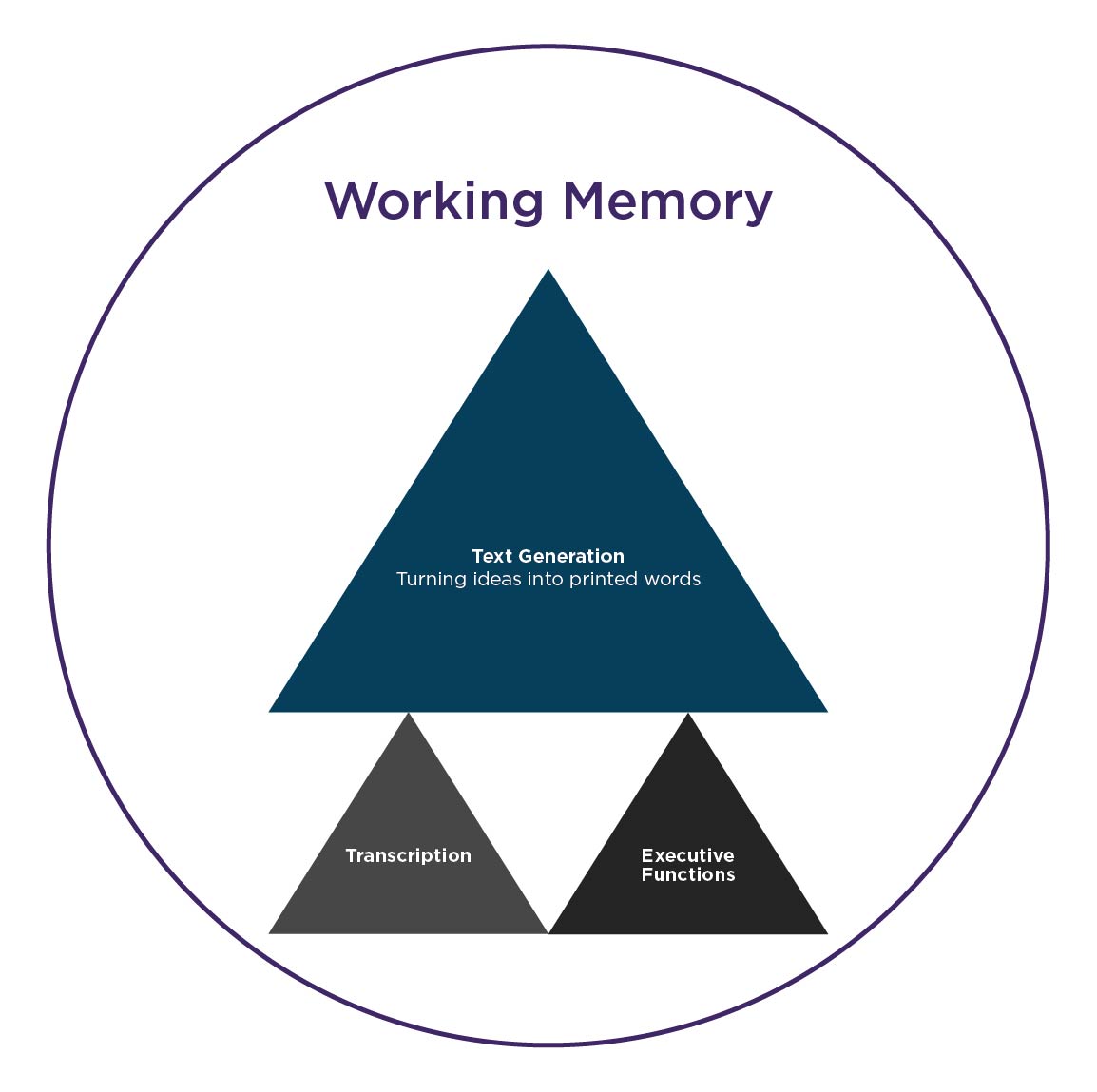
One parent–teacher conference stands out in my mind more than all the others. It was the beginning of the school year, and my partner and I were sitting in our son’s fourth-grade classroom. The teacher began by saying the students had just taken a writing assessment.
“They were given twenty minutes to respond to a prompt,” she said.
“Oh, our son’s very creative. How’d he do?”
She took out a blank piece of paper with our son’s name on it. We were confused.
“He wrote nothing?!” I said in disbelief.
This was a kid with a vivid imagination and an advanced vocabulary. He would tell elaborate stories at home. He would write and draw in journals, describing animals with quirky personalities and superpowers. But at school, in response to an open-ended writing prompt, he suddenly had nothing to say. Did he have writer’s block? Maybe he was just having a bad day?
The teacher didn’t think so. She took a deep breath. So did I. Then I listened. Really listened.
“It’s possible the higher demands of this writing task felt overwhelming to your son. Does he struggle with executive function?”
“Struggle with what?” my partner and I said blankly.
And that’s how we learned about executive function and why it plays such an important role in writing.
What is executive function?
Some people have described executive function as an air traffic control system in our brain. Each day, our brain takes in new information and encounters new demands. Our executive function keeps everything straight so we can go on living productive lives.
As adults, we struggle with our own executive function sometimes, probably without even knowing it. If you’ve ever misplaced your keys, felt your mind wandering mid-conversation, or had trouble with multitasking, then you’ve likely experienced problems with executive function.
Why is executive function so important for writing?
When it comes to writing, executive function is what helps us set goals, plan, and organize. It also helps us manage our thoughts, feelings, and behaviors during the writing process. This kind of self-management is known as self-regulation, and it’s critical for writing.
Self-regulation includes things like the attention and motivation needed to start writing (initiation), the self-monitoring and self-evaluation needed to keep writing (stamina), and the positive self-talk and rewards needed to overcome obstacles during writing (persistence).
For emerging and young writers, difficulties with executive function happen more often than people know or understand. For children with learning differences (such as dyslexia, autism, or ADHD, like my son), who already struggle with executive function, writing becomes that much more difficult. Understanding that executive function difficulties are real—and what you can do to help—can empower kids to see themselves as writers in spite of how hard writing is.
What does the Simple View of Writing say about executive function?
The graphic here shows the key components of the Simple View of Writing: transcription, text generation, and executive functions. These three components all happen within the limits of working memory, meaning they constantly compete for our available mental resources. When one component takes up most of our working memory, we have less brain power available for the other two.
The Simple View of Writing
 Beginning writers, as my colleague Heather Cella explained in “Why transcription is important in your child’s writing and reading journey,” dedicate most of their working memory to transcription (handwriting, spelling, and typing) until these skills become more automatic. Once these skills are more automatic, more mental resources become available for executive functions, including the goal setting, planning, organization, and self-regulation needed for more complex writing tasks. When children encounter significant difficulties with executive functions (such as lacking the motivation to practice and the attention needed to start writing, as in the example with my son), it can adversely affect text generation, or their ability to generate ideas and compose text.
Beginning writers, as my colleague Heather Cella explained in “Why transcription is important in your child’s writing and reading journey,” dedicate most of their working memory to transcription (handwriting, spelling, and typing) until these skills become more automatic. Once these skills are more automatic, more mental resources become available for executive functions, including the goal setting, planning, organization, and self-regulation needed for more complex writing tasks. When children encounter significant difficulties with executive functions (such as lacking the motivation to practice and the attention needed to start writing, as in the example with my son), it can adversely affect text generation, or their ability to generate ideas and compose text.
The good news is there are lots of ways to help your child build executive function skills. For inspiration, let’s look to what skilled writers do, including how they reduce demands on their working memory.
1. Set goals
Skilled writers set aside blocks of time for writing, often each day. You can help your child establish a similar routine and gradually build their writing stamina. Building your child’s writing stamina can increase their confidence with writing, and increased confidence provides the motivation needed to set more challenging goals and persist in meeting them.
- Make goals achievable. Writing takes focused attention, and a child’s attention span grows with age. A good rule of thumb is two or three minutes per year of life, though some research suggests an upper limit closer to five minutes. Keep in mind that every child is different. Start small. Use engaging writing prompts and have your child count the words they wrote so they can see the number grow over time. When your child is ready, increase the challenge.
- Be supportive. A positive and supportive environment can increase a child’s motivation. Find out what supports your child’s needs. Some kids with executive function difficulties have trouble managing time because time is an abstract concept. Try using a visual timer, like a sand timer, so your child can see time pass in a more concrete way. If your child has a hard time staying seated, try putting a stretchy band around the legs of their chair. If your child is working on transcription skills, they may need other supports, like a pencil grip, slant board, or special paper. These tools can help make handwriting easier, which frees up working memory for executive function skills. Be sure to remove these supports once they’re no longer needed.
2. Make a plan
Skilled writers spend more time planning than on any other task in the writing process. However, planning can tax our executive function, making it difficult to generate ideas for writing in the first place. Try these proven planning strategies with your child:
- Reduce the number of choices. Open-ended writing tasks can overwhelm our executive function, so reduce the number of choices. For example, if your child is really into cars, you might ask, “Do you want to write about cars of the past or cars of the future?” Then present another choice for consideration. Encourage your child to choose what’s interesting, even if it might be difficult to write about; it’s harder in the long run to write about something boring.
- Ask guiding questions. Help your child understand what they’re thinking with guiding questions. For example, ask, “What’s so interesting to you about cars of the future? Oh, you think they might fly? That sounds like a great place to start your research.”
3. Get organized
Skilled writers document ideas so they don’t have to hold every one in their working memory. Try these strategies to help your child get organized for writing:
- Talk about purpose and audience. Purpose and audience are two abstract concepts that place extra demands on executive function. Let’s say your child is writing a persuasive paper on whether pets should be allowed in school. Talk to them about their opinion: “Oh, so you want to be able to bring your dog to school.” But don’t stop there: “Let’s see. So you need to persuade some people to let you bring your dog to school. That’s your purpose for writing. And who do you need to persuade? The principal? The school board? The community? That’s the audience for your writing.”
- Use a graphic organizer. Knowing the genre of writing can also tell you something about its organization. Your child’s teacher will likely provide them with a graphic organizer for writing, so make sure your child completes it. Graphic organizers are especially helpful for students who are visual learners and thinkers, as students with learning differences often are.
4. Self-regulate
Because writing is primarily a self-initiated and self-sustained activity, it requires more self-regulation than other academic tasks. Skilled writers know how to make their environment conducive to writing and how to regulate their attention, emotions (frustration!), motivation, and writing strategies for maximum productivity. Help your child keep big emotions in check by anticipating what they need to be successful writers.
- Create the right environment. High-quality writing environments are safe spaces where children can express themselves however they want. They have the potential to increase engagement, motivation, and persistence, and they can be particularly helpful for emergent bilingual students. Your child may need a quiet space, with plenty of writing materials and few distractions. Or they might prefer a more vibrant space with carefully chosen sensory inputs, like a bouncy ball to sit on, calming music, or even colored lights.
- Create the right circumstances. Skilled writers think about the circumstances in which they write best. Is it first thing in the morning? After they’ve had some physical activity? After dinner? These are decisions adults often make without conscious thought. Learn what works best for your child.
5. Talk with a mentor
Skilled writers engage in metacognition, or thinking about their writing while they write. Your child’s teacher is an experienced writer and can act as a mentor. Talk with them about other strategies your child can use to self-monitor, evaluate, and revise their writing, as well as build their self-efficacy.
- Find out about self-regulated strategy development. There is a large body of research on the success of self-regulated strategy development (SRSD) in writing. In fact, SRSD has a more positive effect on student writing than any other instructional method. Teachers who use SRSD support students to reduce the difficulty of writing, then release students from these supports when they are ready. Ask your child’s teacher what they know about SRSD and how you can support them in using it. SRSD can be used in combination with whatever your child’s teacher is currently doing, and there are free practice guides available for both elementary and secondary school.
- Pay attention to your child’s self-image as a writer. If your child makes negative statements like, “I’m not a good writer,” they may be stuck in a negative feedback loop that makes them avoid writing, and it’s hard to get better at writing without having lots of opportunities to practice. Talk with your child’s teacher about their attitude toward writing. Students who learn to use self-regulating strategies during the writing process, including managing their emotions, attitudes, beliefs, and attention, have more positive images of themselves as writers.
Success with executive function
Fast forward to the spring of fourth grade. My partner and I are sitting in a parent-teacher conference once again. This time it’s being led by our son, and he’s talking about writing stamina.
He hands us a prompt. We feel nervous. Then he reveals an entire page of his own writing, brimming with words and ideas. We think back to the blank page from the start of the year. The before and after is startling. What made the difference?
To be honest, we tried every strategy in this post. While some worked better than others for our son, one thing remained true: Nothing succeeds like success.
We sat in silent awe as he stared at his end-of-the-year writing prompt, smiling from ear to ear.
“What’s the best thing you learned this year?” I asked him.
“I’m a really good writer,” he said without hesitation.







